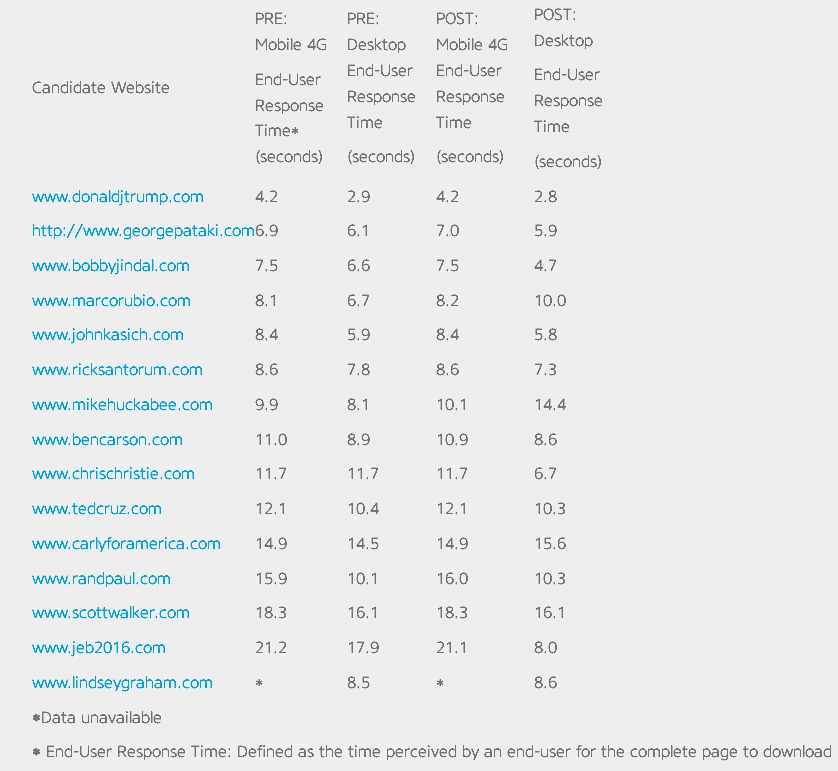
Trump’s website performance before, during, and after the second Republican presidential debates on CNN continued to solidly outpace his opponents with sub-five second response times on both mobile and desktop.
Donald Trump, whose debate responses some pundits called “lightweight,” has a website that is consistently lightweight as well, but that contributes to its frontrunner status, performance-wise, so in that respect it’s a winning strategy. Weighing in at just about one megabyte, the Trump site is loading on desktops consistently in less than three seconds, and on 4G in just over four seconds, both well ahead of the rest of the candidates.
All eyes were also on Carly Fiorina to see how she performed after moving up from the undercard to primetime. While some headlines say she “crushed” it, her website performance continued to languish in the bottom third of the Republican candidate pool, with page-load times hovering in the mid-teens on both desktop and 4G.

The candidates’ websites were measured continuously by AppDynamics and summary data was collected the day before the debate and again, during, and immediately following the debate.
The Bush and Christie campaigns repeated a maneuver they used for the first debate, which was to significantly reduce the weight of their home pages so that they would load much faster on debate night, when one would expect a significant spike in traffic. The “Jeb 2016” site loaded more than twice as fast on debate night, and the Christie site shaved more than 40 percent off its load time.
The Bush and Christie campaigns are being very strategic in how they manage their sites for performance. Making those changes for debate night to speed up their sites is a smart move in anticipation of a lot of new traffic. Those new visitors are going to have a good experience, performance-wise. It’s a trade-off, though, because you want a rich content experience, too. Between the debates, they went back to their heavier pages — which in the case of Bush, was more than four times the debate night weight — 8.3 megabytes versus 2.0. That’s a huge difference.
When you look at all the candidates’ website performance, as a group their end-user response time is not all that impressive, but that can be deceptive. In most cases, their ‘time to first render’ is acceptable. Fiorina’s site, for example, has a first-render time on desktop of 3.4 seconds, which most users would consider acceptable.
Here is how the websites performed on average before the debate, measured on Tuesday, 9/15, and then during and immediately following the debate:

AppDynamics measured the ten candidates’ websites from two locations, one on the East Coast and one on the West Coast, using the Google Chrome web browser. While the actual experience of end users varies due to a variety of factors, the synthetic measurements that AppDynamics provides offer an accurate, relative ranking of the performance of the candidates’ websites.
Peter Kacandes is Senior Technical Marketing Manager of Mobile, Web, and Synthetics at AppDynamics.


